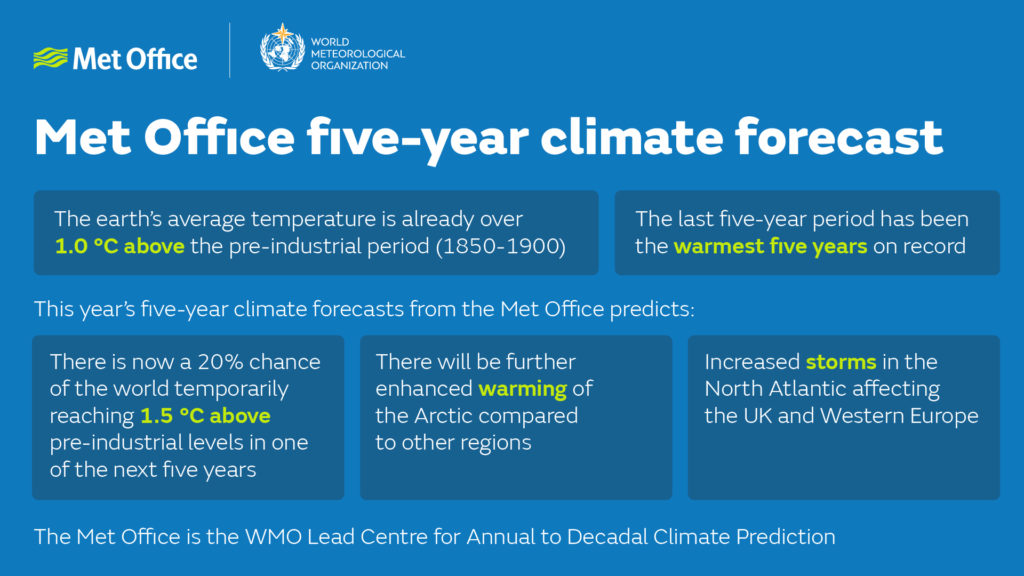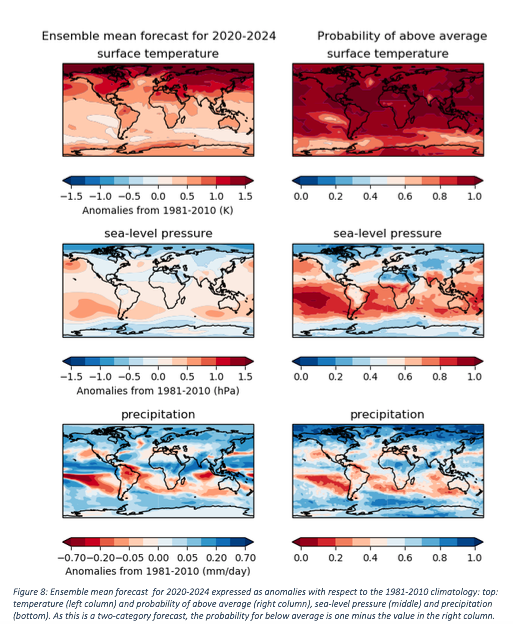The Global Annual to Decadal Climate Update, led by the UK’s Met Office, provides a climate outlook for the next five years, updated annually. The WMO says the update harnesses the expertise of climate scientists and computer models from leading climate centers around the world to produce actionable information for decision makers.
“This study shows – with a high level of scientific skill – the enormous challenge ahead in meeting the Paris Agreement on Climate Change target of keeping a global temperature rise this century well below 2°C above pre-industrial levels and to pursue efforts to limit the temperature increase even further to 1.5°C,” said WMO secretary general Petteri Taalas.
The WMO said the group’s predictions take into account natural variations as well as human influences on climate to provide what it feels are the best possible forecasts of temperature, rainfall, wind patterns and other variables for the coming five years. The forecast models do not take into consideration changes in emissions of greenhouse gases and aerosols as a result of the coronavirus lockdown.
“The WMO has repeatedly stressed that the industrial and economic slowdown from Covid-19 is not a substitute for sustained and coordinated climate action. Due to the very long lifetime of CO2 in the atmosphere, the impact of the drop in emissions this year is not expected to lead to a reduction of CO2 atmospheric concentrations which are driving global temperature increases,” said professor Taalas.
 “While Covid-19 has caused a severe international health and economic crisis, failure to tackle climate change may threaten human well-being, ecosystems and economies for centuries. Governments should use the opportunity to embrace climate action as part of recovery programs and ensure that we grow back better,” he added.
“While Covid-19 has caused a severe international health and economic crisis, failure to tackle climate change may threaten human well-being, ecosystems and economies for centuries. Governments should use the opportunity to embrace climate action as part of recovery programs and ensure that we grow back better,” he added.
Professor Adam Scaife is the head of long-range prediction at the Met Office Hadley Centre. “This is an exciting new scientific capability. As human-induced climate change grows, it is becoming even more important for governments and decision makers to understand the current climate risks on an annually-updated basis,” he said.




